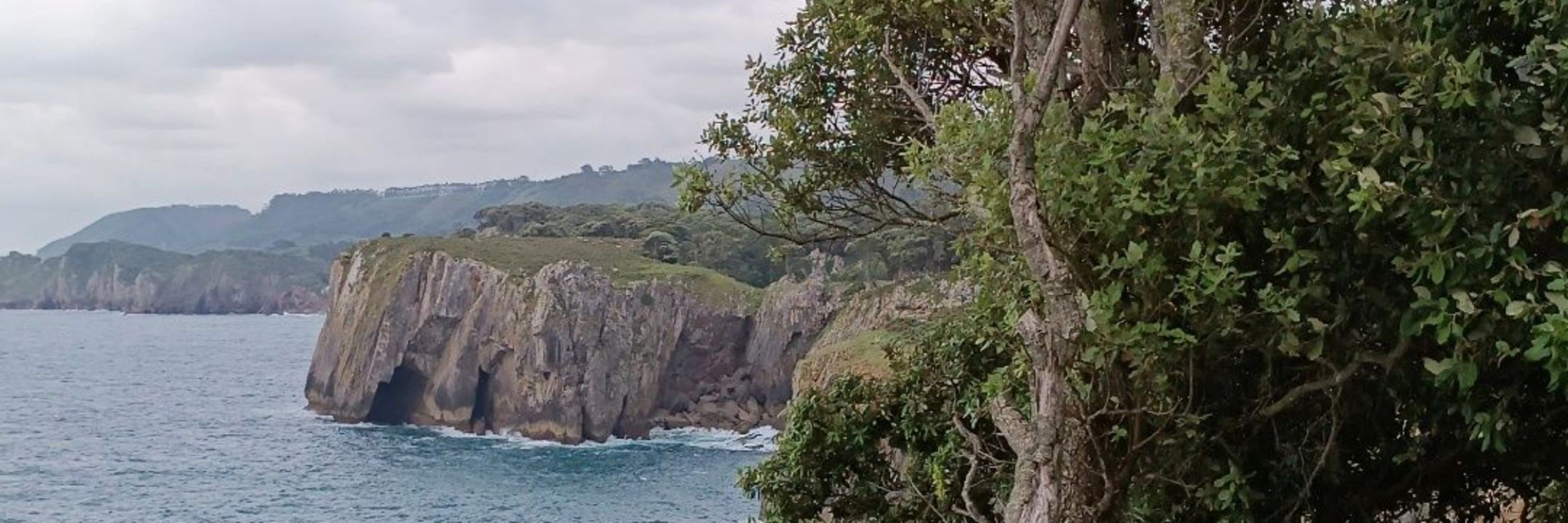
Víctor González-García
@gonzalezgvictor.bsky.social
🌿 Asturies 🌳 PhD at IMIB-UniOvi 🌲 Atlantic Botanical Garden of Gijón/Xixón 🌾 Botanist 🌱
https://www.researchgate.net/profile/Victor-Gonzalez-Garcia-2
https://www.researchgate.net/profile/Victor-Gonzalez-Garcia-2
Pinned

Forest habitat diversity in the Cantabrian Mixed Forests ecoregion (NW Iberian Peninsula), a climatic refugium in western Europe
The Cantabrian Mixed Forests ecoregion is a meeting-point for deciduous, evergreen and coniferous forest diversity in southern Europe. Using a three-step classification (1 — EUNIS expert system; 2 — ...
onlinelibrary.wiley.com
Today is #ForestDay so I remember you this paper of mine focused on the forests from the Cantabrian Mixed Forests ecoregion (NW Iberia).
onlinelibrary.wiley.com/doi/10.1111/...
onlinelibrary.wiley.com/doi/10.1111/...
Reposted by Víctor González-García
Deciduous leaves may have evolved to be symmetrical and subtly lobed so they fall quicker and land near their parent tree, recycling their annually sequestered carbon. Join us 22 Oct 3:00 PM (London, UK) to hear #JRSocInterface author Kaare Jensen talk about his research: cassyni.com/events/5PbU2...
October 17, 2025 at 8:49 AM
Deciduous leaves may have evolved to be symmetrical and subtly lobed so they fall quicker and land near their parent tree, recycling their annually sequestered carbon. Join us 22 Oct 3:00 PM (London, UK) to hear #JRSocInterface author Kaare Jensen talk about his research: cassyni.com/events/5PbU2...
Reposted by Víctor González-García
📢 68th #IAVS Symposium: Understanding #Ecosystems through #Vegetation | 22-26 June 2026, Spain
Join us to explore how vegetation shapes #biodiversity and ecosystems worldwide!
📅 Call for Special Session proposals is now open: 15 Oct – 15 Nov 2025
👉 Details: gijon2026.iavs-meetings.org
#IAVS2026
Join us to explore how vegetation shapes #biodiversity and ecosystems worldwide!
📅 Call for Special Session proposals is now open: 15 Oct – 15 Nov 2025
👉 Details: gijon2026.iavs-meetings.org
#IAVS2026

October 22, 2025 at 6:28 AM
📢 68th #IAVS Symposium: Understanding #Ecosystems through #Vegetation | 22-26 June 2026, Spain
Join us to explore how vegetation shapes #biodiversity and ecosystems worldwide!
📅 Call for Special Session proposals is now open: 15 Oct – 15 Nov 2025
👉 Details: gijon2026.iavs-meetings.org
#IAVS2026
Join us to explore how vegetation shapes #biodiversity and ecosystems worldwide!
📅 Call for Special Session proposals is now open: 15 Oct – 15 Nov 2025
👉 Details: gijon2026.iavs-meetings.org
#IAVS2026
🚨Paper alert!🚨
Just published in Landscape and Urban Planning at
www.sciencedirect.com/science/arti...
In this study we developed a novelty index by comparing plant, fungal and bacterial communities in urban and natural habitats.
@sebot.bsky.social @uodivulga.bsky.social
Just published in Landscape and Urban Planning at
www.sciencedirect.com/science/arti...
In this study we developed a novelty index by comparing plant, fungal and bacterial communities in urban and natural habitats.
@sebot.bsky.social @uodivulga.bsky.social

Compositional novelty of plant, fungal and bacterial communities across urban habitats
Understanding urban community novelty can help to predict the rewilding potential of vacant urban spaces, facilitating their integration into biodiver…
www.sciencedirect.com
October 10, 2025 at 8:53 AM
🚨Paper alert!🚨
Just published in Landscape and Urban Planning at
www.sciencedirect.com/science/arti...
In this study we developed a novelty index by comparing plant, fungal and bacterial communities in urban and natural habitats.
@sebot.bsky.social @uodivulga.bsky.social
Just published in Landscape and Urban Planning at
www.sciencedirect.com/science/arti...
In this study we developed a novelty index by comparing plant, fungal and bacterial communities in urban and natural habitats.
@sebot.bsky.social @uodivulga.bsky.social
Reposted by Víctor González-García
Today I presented at #iDivconference2025 on using the microclimf R-package to model within-forest climate conditions for vegetation science 🌳🌡️. The model is performing really well so far—exciting insights ahead!
Full results coming soon at #BES2025 this December 🌱
Full results coming soon at #BES2025 this December 🌱

October 1, 2025 at 12:52 PM
Today I presented at #iDivconference2025 on using the microclimf R-package to model within-forest climate conditions for vegetation science 🌳🌡️. The model is performing really well so far—exciting insights ahead!
Full results coming soon at #BES2025 this December 🌱
Full results coming soon at #BES2025 this December 🌱
Last week I could attend the II SEBOT conference in Seville, where I presented my research focused on the natural communities of Scots pine (Pinus sylvestris) in the Iberian Peninsula.
@sebot.bsky.social
@sebot.bsky.social


September 30, 2025 at 1:15 PM
Last week I could attend the II SEBOT conference in Seville, where I presented my research focused on the natural communities of Scots pine (Pinus sylvestris) in the Iberian Peninsula.
@sebot.bsky.social
@sebot.bsky.social
Reposted by Víctor González-García
El viernes 26 estaremos en #Gijón en la #EuropeanResearchersNight con el stand "Las plantas viajeras" @universidadoviedo.bsky.social @imibasturias.bsky.social #science4all #MSCANight #NIGHTSpain


September 17, 2025 at 8:37 AM
El viernes 26 estaremos en #Gijón en la #EuropeanResearchersNight con el stand "Las plantas viajeras" @universidadoviedo.bsky.social @imibasturias.bsky.social #science4all #MSCANight #NIGHTSpain
🚨Paper alert!🚨
Just published in Mediterranean Botanty at
revistas.ucm.es/index.php/MB...
In this study we focused on the orchid diversity of the Principality of Asturias (NW Spain) and the drivers behind such diversity.
Just published in Mediterranean Botanty at
revistas.ucm.es/index.php/MB...
In this study we focused on the orchid diversity of the Principality of Asturias (NW Spain) and the drivers behind such diversity.
Orchids of the Principality of Asturias (Northwestern Spain) | Mediterranean Botany
In this study we present a review of the orchid family in the Principality of Asturias, Northwestern Spain. The study area comprises 10,000 km² for which we have compiled and curated up to 9197 records coming from several sources: fieldwork, herbaria, specialized publications, gray-literature, citizen science platforms, Global Biodiversity Information Facility (GBIF) and social media. The territory comprises 52 confirmed species and 13 hybrids, with other 16 possibly present species being discussed and still other 6 explicitly dismissed. Gymnadenia densiflora (Wahlenb.) A. Dietr. and all nothotaxa, except those in Serapias, represent novelties for the area. For each of the 52 species we provide a brief description of their habitat, altitudinal range and flowering period. Additionally, we present a statistical exploration of the main drivers of orchids’ ecology and distribution in the territory. Our review demonstrates how the Principality of Asturias, despite its marginal geographic position—away from major diversification centers—, and the scarcity of detailed floristic studies and, in particular, of those specifically focused on orchids, qualifies as a significantly orchid-rich region within the European context, even when judged by the demanding standards of the rich Iberian flora. The role of citizen science, particularly triggered by these cherished plants, has been and will continue to be crucial in perfecting our knowledge of Asturian orchids.
revistas.ucm.es
September 13, 2025 at 8:58 AM
🚨Paper alert!🚨
Just published in Mediterranean Botanty at
revistas.ucm.es/index.php/MB...
In this study we focused on the orchid diversity of the Principality of Asturias (NW Spain) and the drivers behind such diversity.
Just published in Mediterranean Botanty at
revistas.ucm.es/index.php/MB...
In this study we focused on the orchid diversity of the Principality of Asturias (NW Spain) and the drivers behind such diversity.
Reposted by Víctor González-García
Third PhD paper alert!
Just published in Plant Biology available at onlinelibrary.wiley.com/doi/10.1111/...
We explored the functional trade-offs and ecological correlates of seed oil traits by examining seed oil patterns in 47 alpine species. (1/5)
Just published in Plant Biology available at onlinelibrary.wiley.com/doi/10.1111/...
We explored the functional trade-offs and ecological correlates of seed oil traits by examining seed oil patterns in 47 alpine species. (1/5)
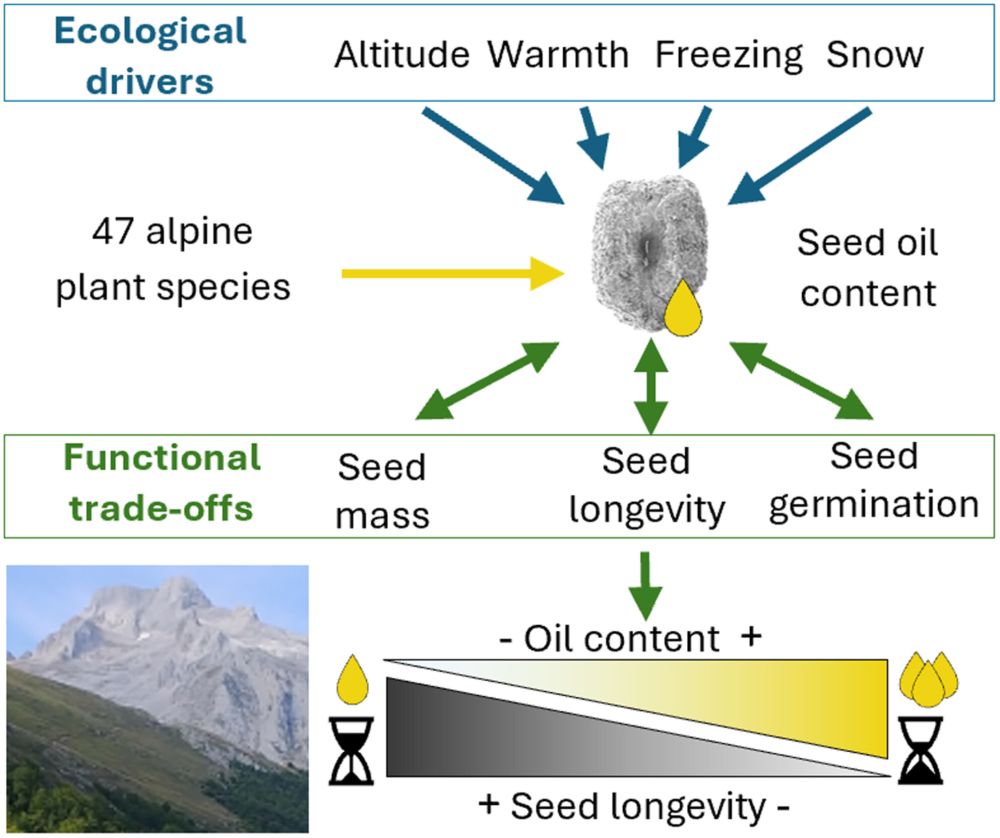
Functional trade‐offs and ecological correlates of seed oil traits in alpine ecosystems
This study examines seed oil content patterns in 47 alpine species, revealing a significant trade-off between seed oil and seed longevity.
onlinelibrary.wiley.com
September 5, 2025 at 2:24 PM
Third PhD paper alert!
Just published in Plant Biology available at onlinelibrary.wiley.com/doi/10.1111/...
We explored the functional trade-offs and ecological correlates of seed oil traits by examining seed oil patterns in 47 alpine species. (1/5)
Just published in Plant Biology available at onlinelibrary.wiley.com/doi/10.1111/...
We explored the functional trade-offs and ecological correlates of seed oil traits by examining seed oil patterns in 47 alpine species. (1/5)
Reposted by Víctor González-García
¿Sabías que las plantas #invasoras florecen más tarde y por más tiempo que las nativas? Un estudio con datos de @gbif.org e @inaturalist.bsky.social - @natusferaes.bsky.social así lo ha observado para el norte de la Península Ibérica:
▶️ doi.org/10.1093/aob/... 👇
▶️ doi.org/10.1093/aob/... 👇
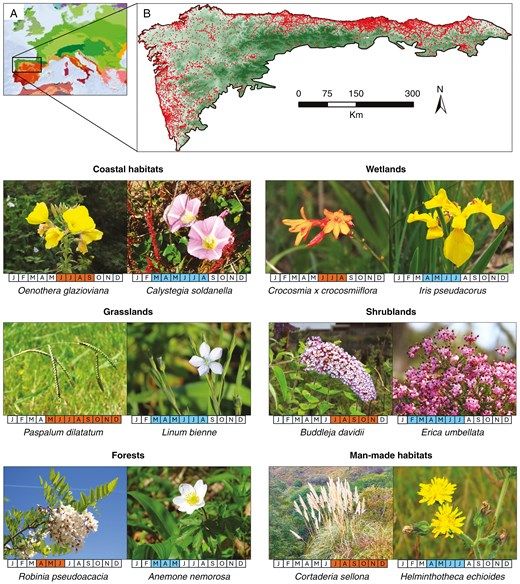
June 26, 2025 at 12:54 PM
¿Sabías que las plantas #invasoras florecen más tarde y por más tiempo que las nativas? Un estudio con datos de @gbif.org e @inaturalist.bsky.social - @natusferaes.bsky.social así lo ha observado para el norte de la Península Ibérica:
▶️ doi.org/10.1093/aob/... 👇
▶️ doi.org/10.1093/aob/... 👇
Hello everyone! Our latest paper "Invasive plants have a delayed and longer flowering phenology than native plants in an ecoregional flora" is available in @annbot.bsky.social
www.researchgate.net/publication/...
www.researchgate.net/publication/...

Invasive plants have a delayed and longer flowering phenology than native plants in an ecoregional flora | Request PDF
Request PDF | Invasive plants have a delayed and longer flowering phenology than native plants in an ecoregional flora | Background and Aims Flowering phenology has been suggested as an important fact...
www.researchgate.net
June 12, 2025 at 8:27 PM
Hello everyone! Our latest paper "Invasive plants have a delayed and longer flowering phenology than native plants in an ecoregional flora" is available in @annbot.bsky.social
www.researchgate.net/publication/...
www.researchgate.net/publication/...
Yesterday we visited some places in Asturias where unusual ferns can be seen.
These ferns are more typical from tropical and subtropical regions, like Macaronesia.
Yet, they have survived to several climatic shifts and thrive in humid and warm valleys close to the coast, like Nueva, in Llanes.
These ferns are more typical from tropical and subtropical regions, like Macaronesia.
Yet, they have survived to several climatic shifts and thrive in humid and warm valleys close to the coast, like Nueva, in Llanes.
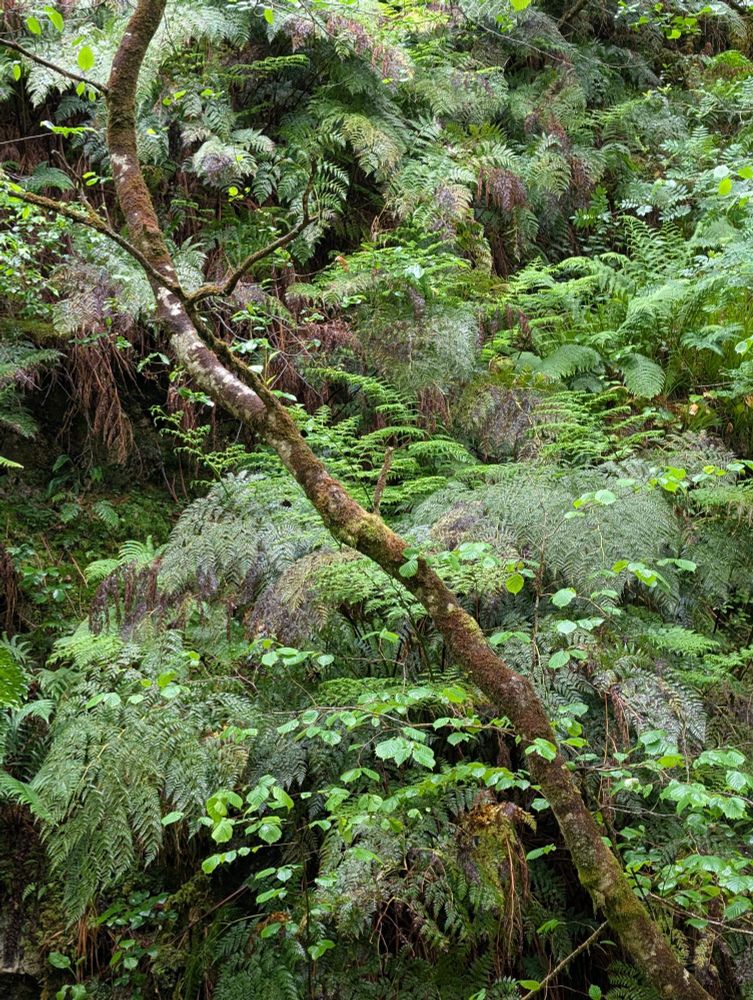



June 4, 2025 at 9:02 PM
Yesterday we visited some places in Asturias where unusual ferns can be seen.
These ferns are more typical from tropical and subtropical regions, like Macaronesia.
Yet, they have survived to several climatic shifts and thrive in humid and warm valleys close to the coast, like Nueva, in Llanes.
These ferns are more typical from tropical and subtropical regions, like Macaronesia.
Yet, they have survived to several climatic shifts and thrive in humid and warm valleys close to the coast, like Nueva, in Llanes.
Reposted by Víctor González-García
🎉 Good news! The paper ‘🎉 Good news! The paper ‘Invasive plants have a delayed and longer flowering phenology than native plants in an ecoregional flora’ in @annbot.bsky.social by Adrián Lázaro-Lobo and co-authors is now #free for a limited time 🧵(1/7)
👉 doi.org/ppkm
#AoBpapers #PlantScience
👉 doi.org/ppkm
#AoBpapers #PlantScience

May 29, 2025 at 10:10 AM
🎉 Good news! The paper ‘🎉 Good news! The paper ‘Invasive plants have a delayed and longer flowering phenology than native plants in an ecoregional flora’ in @annbot.bsky.social by Adrián Lázaro-Lobo and co-authors is now #free for a limited time 🧵(1/7)
👉 doi.org/ppkm
#AoBpapers #PlantScience
👉 doi.org/ppkm
#AoBpapers #PlantScience
Reposted by Víctor González-García
Hoy ha comenzado el #VBiomaratón de Flora Española. ¡A esta hora ya tenemos más de 2000 observaciones en nuestro proyecto de @inaturalist.bsky.social! Puedes seguir las observaciones en tiempo real en www.inaturalist.org/projects/v-b...
@sebot.bsky.social @sebicop.bsky.social
@sebot.bsky.social @sebicop.bsky.social

May 15, 2025 at 2:22 PM
Hoy ha comenzado el #VBiomaratón de Flora Española. ¡A esta hora ya tenemos más de 2000 observaciones en nuestro proyecto de @inaturalist.bsky.social! Puedes seguir las observaciones en tiempo real en www.inaturalist.org/projects/v-b...
@sebot.bsky.social @sebicop.bsky.social
@sebot.bsky.social @sebicop.bsky.social
Reposted by Víctor González-García
EVA-MAP: www.EVAMAP.eu
We have launched a new online map of vegetation plots in the European Vegetation Archive (EVA) and ReSurveyEurope database. You can select plots using a filtering form or drawing an area in the map, explore plot metadata and export lists of selected plots with metadata.
We have launched a new online map of vegetation plots in the European Vegetation Archive (EVA) and ReSurveyEurope database. You can select plots using a filtering form or drawing an area in the map, explore plot metadata and export lists of selected plots with metadata.
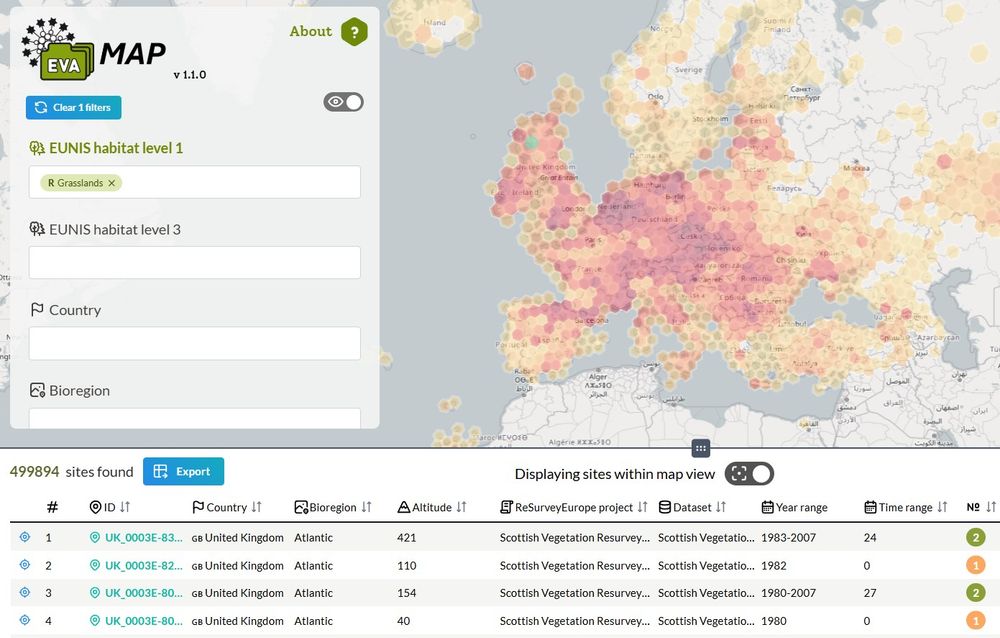
May 7, 2025 at 5:43 AM
EVA-MAP: www.EVAMAP.eu
We have launched a new online map of vegetation plots in the European Vegetation Archive (EVA) and ReSurveyEurope database. You can select plots using a filtering form or drawing an area in the map, explore plot metadata and export lists of selected plots with metadata.
We have launched a new online map of vegetation plots in the European Vegetation Archive (EVA) and ReSurveyEurope database. You can select plots using a filtering form or drawing an area in the map, explore plot metadata and export lists of selected plots with metadata.
This week I have been in Perugia attending to the 33 European Survey Vegetation (EVS) where I could present the results of my last research about European forests using vegetation data from the European Vegetation Archive (EVA) @euroveg.bsky.social @iavs5.bsky.social


May 4, 2025 at 6:54 PM
This week I have been in Perugia attending to the 33 European Survey Vegetation (EVS) where I could present the results of my last research about European forests using vegetation data from the European Vegetation Archive (EVA) @euroveg.bsky.social @iavs5.bsky.social
Reposted by Víctor González-García
🌲 Our latest research looked at understory plant diversity in black pine forests within and outside their native range in Europe.
📚 Read more in our full study: onlinelibrary.wiley.com/doi/epdf/10....
#Macroecology #Biodiversity #Conservation #PinusNigra #NonNativeForests
📚 Read more in our full study: onlinelibrary.wiley.com/doi/epdf/10....
#Macroecology #Biodiversity #Conservation #PinusNigra #NonNativeForests
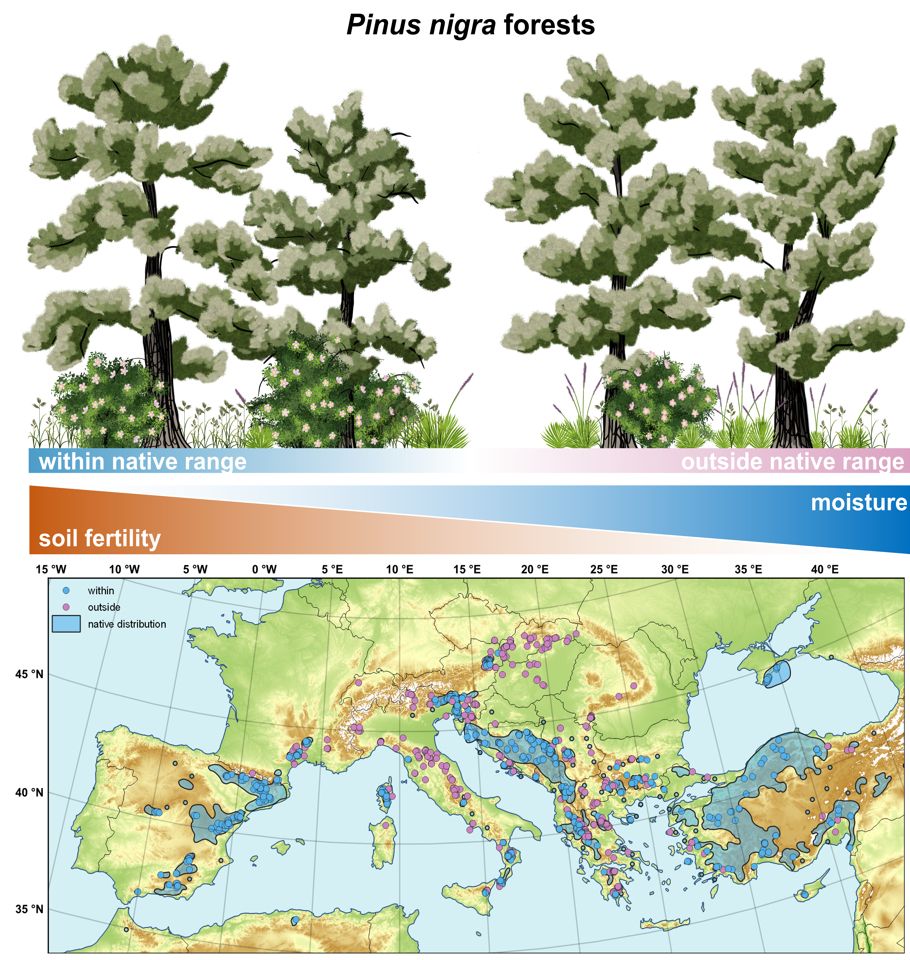
April 8, 2025 at 7:48 PM
🌲 Our latest research looked at understory plant diversity in black pine forests within and outside their native range in Europe.
📚 Read more in our full study: onlinelibrary.wiley.com/doi/epdf/10....
#Macroecology #Biodiversity #Conservation #PinusNigra #NonNativeForests
📚 Read more in our full study: onlinelibrary.wiley.com/doi/epdf/10....
#Macroecology #Biodiversity #Conservation #PinusNigra #NonNativeForests
Reposted by Víctor González-García
Eventos del Principado de Asturias en el #VBiomaraton 👇🏻:

April 30, 2025 at 5:39 PM
Eventos del Principado de Asturias en el #VBiomaraton 👇🏻:
Reposted by Víctor González-García
Weeding palms.
Roberto Venanzoni removes seedlings of Trachycarpus fortunei, an East Asian palm, from flower beds with native plants in central Italy. The massive spread of this non-native palm and other evergreen plants (laurophyllization) in southern Europe is supported by global warming.
Roberto Venanzoni removes seedlings of Trachycarpus fortunei, an East Asian palm, from flower beds with native plants in central Italy. The massive spread of this non-native palm and other evergreen plants (laurophyllization) in southern Europe is supported by global warming.

April 30, 2025 at 8:33 PM
Weeding palms.
Roberto Venanzoni removes seedlings of Trachycarpus fortunei, an East Asian palm, from flower beds with native plants in central Italy. The massive spread of this non-native palm and other evergreen plants (laurophyllization) in southern Europe is supported by global warming.
Roberto Venanzoni removes seedlings of Trachycarpus fortunei, an East Asian palm, from flower beds with native plants in central Italy. The massive spread of this non-native palm and other evergreen plants (laurophyllization) in southern Europe is supported by global warming.
Reposted by Víctor González-García
European Vegetation Survey excursion to Colfiorito wetlands, the high plains of Monti Sibillini (Castelluccio di Norcia) and Norcia led by Corrado Marcenò, Riccardo Guarino, and Alessandro Silvestre Gristina

April 30, 2025 at 7:24 PM
European Vegetation Survey excursion to Colfiorito wetlands, the high plains of Monti Sibillini (Castelluccio di Norcia) and Norcia led by Corrado Marcenò, Riccardo Guarino, and Alessandro Silvestre Gristina
Do you know the blue beetle Hoplia coerulea?
In our latest research we studied its westernmost populations, located in Asturias (NW Spain), trying to understand its distribution and potential threats.
www.researchgate.net/publication/...
In our latest research we studied its westernmost populations, located in Asturias (NW Spain), trying to understand its distribution and potential threats.
www.researchgate.net/publication/...

(PDF) Estudio de las poblaciones conocidas de Hoplia (Hoplia) coerulea (Drury, [1773]) en la Comunidad Autónoma del Principado de Asturias (Coleoptera Melolonthidae) y aproximación a su distribución p...
PDF | Se presentan los resultados del estudio y seguimiento de la especie Hoplia (Hoplia) coerulea (Drury, [1773])(Coleoptera: Melolonthidae) en su... | Find, read and cite all the research you need o...
www.researchgate.net
April 23, 2025 at 6:04 PM
Do you know the blue beetle Hoplia coerulea?
In our latest research we studied its westernmost populations, located in Asturias (NW Spain), trying to understand its distribution and potential threats.
www.researchgate.net/publication/...
In our latest research we studied its westernmost populations, located in Asturias (NW Spain), trying to understand its distribution and potential threats.
www.researchgate.net/publication/...
Reposted by Víctor González-García
“No se debería pescar ningún salmón, hacerlo es condenarlo a la extinción”
Lo dice bien claro hoy mi compañero @natcantabrica.bsky.social en una entrevista @elpais.com
elpais.com/clima-y-medi...
Lo dice bien claro hoy mi compañero @natcantabrica.bsky.social en una entrevista @elpais.com
elpais.com/clima-y-medi...
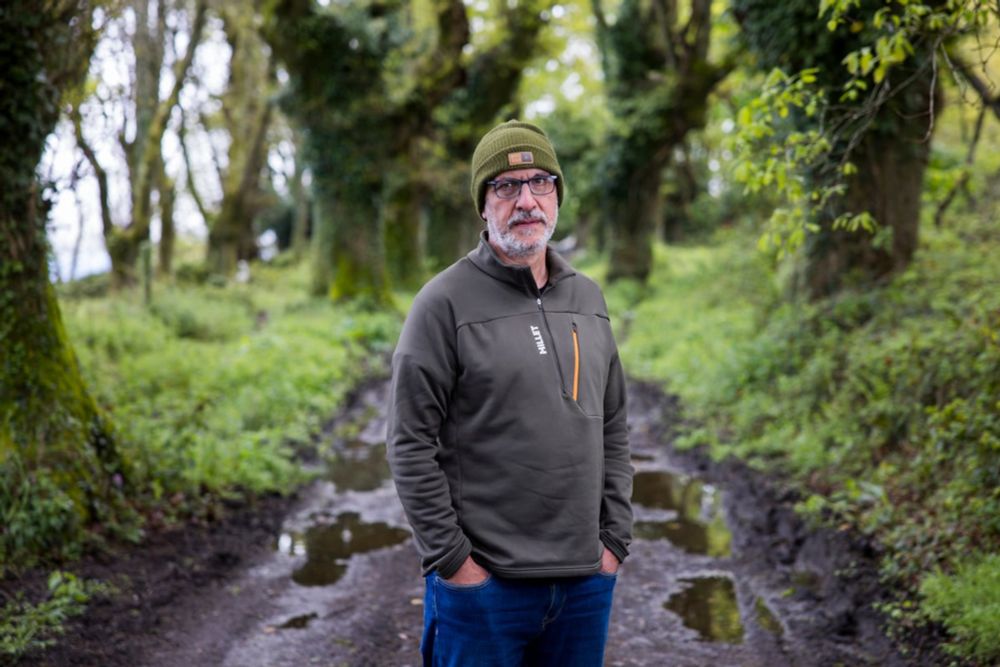
David Álvarez, biólogo: “No se debería pescar ningún salmón, hacerlo es condenarlo a la extinción”
El investigador y docente estudia los salmónidos desde hace más de 25 años y lucha por cambiar la gestión de la especie, que sufre una brutal regresión
elpais.com
April 20, 2025 at 7:53 AM
“No se debería pescar ningún salmón, hacerlo es condenarlo a la extinción”
Lo dice bien claro hoy mi compañero @natcantabrica.bsky.social en una entrevista @elpais.com
elpais.com/clima-y-medi...
Lo dice bien claro hoy mi compañero @natcantabrica.bsky.social en una entrevista @elpais.com
elpais.com/clima-y-medi...
Reposted by Víctor González-García
¡Falta un mes para el #VBiomaratón y hay que calentar motores! Aquí están algunas plantas vistas hoy en un paseo por la Sierra de Gredos (Ávila), de cuatro familias distintas: Polygala microphylla, Arenaria montana, Narcissus triandrus y Geum sylvaticum.




April 17, 2025 at 7:44 PM
¡Falta un mes para el #VBiomaratón y hay que calentar motores! Aquí están algunas plantas vistas hoy en un paseo por la Sierra de Gredos (Ávila), de cuatro familias distintas: Polygala microphylla, Arenaria montana, Narcissus triandrus y Geum sylvaticum.
Today I was invited to guide a botanical excursion in Foces de El Pino (Aller), where we could see different types of vegetation and their flora.
Some of the protagonists today were Scilla lilio-hyacinthus and the ubiquitous Primula (P. vulgaris, P. veris and P. x polyantha).
Some of the protagonists today were Scilla lilio-hyacinthus and the ubiquitous Primula (P. vulgaris, P. veris and P. x polyantha).




April 18, 2025 at 8:52 PM
Today I was invited to guide a botanical excursion in Foces de El Pino (Aller), where we could see different types of vegetation and their flora.
Some of the protagonists today were Scilla lilio-hyacinthus and the ubiquitous Primula (P. vulgaris, P. veris and P. x polyantha).
Some of the protagonists today were Scilla lilio-hyacinthus and the ubiquitous Primula (P. vulgaris, P. veris and P. x polyantha).
This last Friday we visited different forests with the students from the degree in forestry and sustainable natural resources management (University of Oviedo).
We could appreciate the diversity of our territory, starting with the mesic and temperate riparian, beech, and birch forests.
We could appreciate the diversity of our territory, starting with the mesic and temperate riparian, beech, and birch forests.



April 13, 2025 at 9:00 PM
This last Friday we visited different forests with the students from the degree in forestry and sustainable natural resources management (University of Oviedo).
We could appreciate the diversity of our territory, starting with the mesic and temperate riparian, beech, and birch forests.
We could appreciate the diversity of our territory, starting with the mesic and temperate riparian, beech, and birch forests.
Reposted by Víctor González-García
Se acaba marzo y con ello llega nuestra #EspeciedelMesJxBE. Este mes le toca a la hierba de los ballesteros o eléboro fétido: Helleborus foetidus, una planta muy común en matorrales, bosques y sus orlas, que suele florecer desde mediados del invierno hasta bien avanzada la primavera.

March 31, 2025 at 6:02 PM
Se acaba marzo y con ello llega nuestra #EspeciedelMesJxBE. Este mes le toca a la hierba de los ballesteros o eléboro fétido: Helleborus foetidus, una planta muy común en matorrales, bosques y sus orlas, que suele florecer desde mediados del invierno hasta bien avanzada la primavera.

